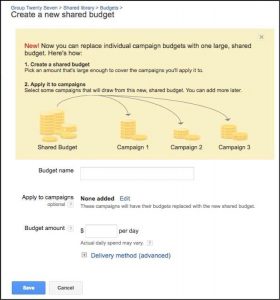To contend with increased financial pressures, agencies are adjusting to new cost structures and angling for new roles.

The modern advertising agency is dead. Long live the modern advertising agency.
Agencies are effectively mercenaries, independent entities hired to help a business conquer a market. That has always been the case and will remain the case in 2018. But recent pressures on agency business models are forcing these shops to shift how they serve clients and prove their worth.
“The modern agency is going to have to really shift away from communications and messaging as the sole driver of revenue and have to really understand product and experience as the core thing they create and layer messaging around that. I think that a modern agency is building a lot more than agencies ever have in the past,” said Ben Gaddis, president of independent agency T3.
Financial pressures
Often isolated from brands’ marketing organizations, many agencies are angling to ingrain themselves deeper within clients’ businesses, to centralize themselves closer to the bottom line. At the heart of this repositioning among agencies is a broad retrenchment among marketers.
“One of the flashpoint issues for agencies is the financial reality of their business model and clients’ continued activity around margin compression,” said Forrester analyst Jay Pattisall.
Agencies’ revenue streams are being attacked on various fronts. First, clients are taking a harder look at their agency contracts to see how much of a brand’s money is going toward advertising and how much toward the agency. Second, many large brands are experiencing their own business constraints and passing along the cost-cutting to their agency relationships. And third, agencies’ businesses continue to be besieged by the management consultancies that — already rooted in helping brands make business strategy decisions and administer their data and technology systems — are now attempting to embed themselves within clients’ marketing departments as well.
Contract scrutiny
In 2015, former Mediacom CEO John Mandel lit a torch around agency business models. He publicly lambasted agencies for pocketing the rebates that publishers offered for brand ad buys. A year later, the Association of National Advertisers (ANA) commissioned a study to investigate the extent of the practice, which it found to be pervasive. That report resulted in many marketers scrutinizing their agency contracts.
Among the marketers reexamining their agency dealings was Procter & Gamble. Even for the world’s biggest advertiser, the inspection was a revelation. The consumer packaged good giant found that one of its agencies was taking for itself some of the money that P&G had put toward its ad campaigns. However, the brand also discovered that this arbitrage did not violate any terms of the agency’s contract.
“Agencies were living up to the language in their contracts, but the problem has been that clients didn’t understand the contracts,” said Pivotal Research analyst Brian Wieser.
Now marketers are closing the loopholes that agencies had exploited to siphon some revenue. Problematically, these practices had been adopted by agencies not to pad their profits but to turn one in the first place. When P&G confronted the agency that was absorbing some of its ad dollars, the agency informed the brand that that money was compensating for the fact that P&G was not compensating the agency enough to cover its expenses.
Clients instituting limits on agency profiteering has been “a significant contributor to revenue deceleration” among agencies, said Wieser.
Cost restructuring
Compounding matters, marketers are pressing agencies to alter their costs, to align their revenue with the marketer’s and intertwine both sides’ success or failure.
“Many of the largest clients are going through periods of time where they are either attacked by activist investors — or are about to be — or they are benchmarking themselves against companies that have been attacked,” said Wieser.
To relieve the pressure to prove the value of their marketing spend, clients are passing the load on to their agencies. They are adopting zero-based budgeting, in which a brand regularly revisits how much money it should spend on marketing. Marketers are also pushing for performance-based pricing, in which agencies are compensated based on the business results returned by a campaign.
“What we’re seeing is clients are expecting more shared outcomes and that we’re measuring success on how we go about accomplishing something together,” said Gaddis.
Agency businesses are rarely stable. But this upending of brand-agency cost structures is threatening their traditional business models to the point that many are striving to establish new ones.
New roles
Hung out on a limb, agencies are attempting to maneuver themselves closer to the trunk of a brand. They are responding to the pressure to change their cost structures as an opportunity to craft a more central role for themselves within brands’ businesses.
“Agencies are more willing to look at different compensation models. They’re willing to look at ways in which they train clients on certain service functions. The agency provides the strategy and trains the marketing staff on how to implement it,” said Pattisall.
Agencies are endeavoring to assume the role that management consultancies typically serve. At the same time, those consultancies are attempting to unseat agencies.
Consultancies such as Accenture and Deloitte have spent the past several years acquiring agencies in an effort to expand their dealings with brands beyond assisting management of their businesses — by offering strategy, data management and systems integration capabilities — to also include building those businesses through marketing.
Thus far, consultancies have not significantly edged in on agencies’ business, according to Wieser. It’s unclear to what extent agencies have succeeded in challenging consultancies, but several have made inroads. Publicis Groupe’s Sapient, WPP’s Wunderman and Dentsu Aegis Network’s Merkle are considered by some to be best positioned to contend with the consultancies. Meanwhile, the consultancies are still contending with incorporating creative capabilities into their typically technical organizations.
However, at the same time agencies venture to serve as one-stop shops for brands’ business needs, brands are exploring splitting their businesses among multiple shops.
“My sense in talking with marketers is [that] there are many that would like to have a number of specialists at their disposal as opposed to a single source,” said Pattisall.
As a result, major agency holding companies have restructured themselves. In some cases, they have consolidated multiple similar agencies into organizations that can stand up as singular specialists. In other cases, they have moved disparate agencies into the same office buildings to offer clients a one-stop shop of specialists.
Expanding, contracting, adapting
Like a heartbeat, agencies are alternating between expansion and contraction in order to survive the pressures threatening their businesses.
“Holding companies are consolidating and streamlining and, in some instances, acquiring with a look to present a more comprehensive and integrated solution to clients. And for mid-sized agencies, they are either focusing very strictly on the things they do best or they too are making partnerships and acquisitions to expand their capabilities,” said Pattisall.
The moves that agencies are making are as much in response to clients’ cost pressures as they are in “recognition that a lot of what [agencies] do is commodified,” said Wieser.
To not only survive but to thrive in 2018 and beyond, agencies “have got to stop trying to be everything to everybody,” said Gaddis.
Marketing Land – Internet Marketing News, Strategies & Tips
(61)









